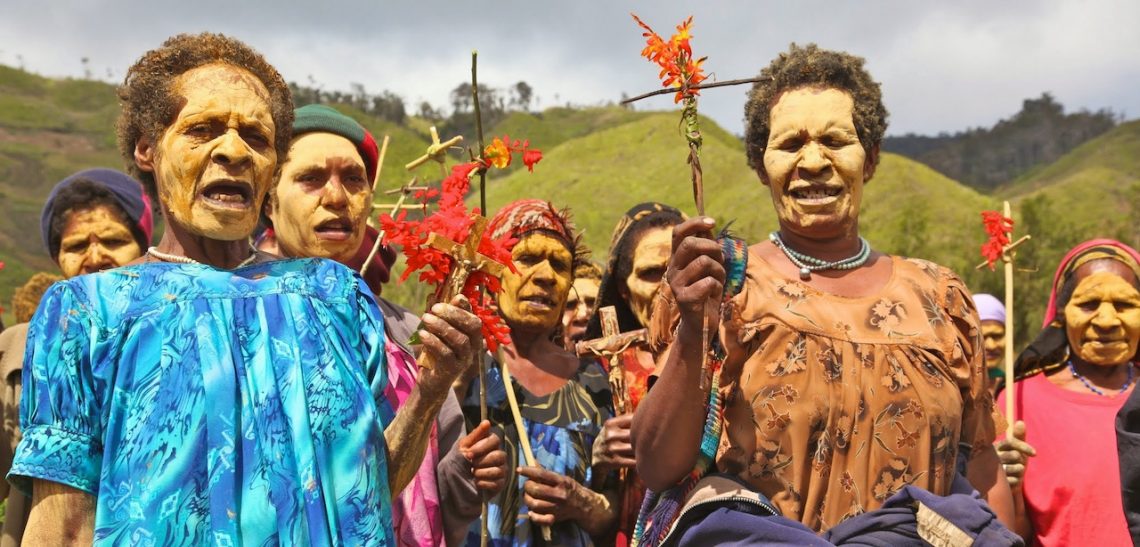
Worldview pluralism: part 1 – sorcery accusations
By Miranda Forsyth and Philip Gibbs
26 March 2021
Sorcery accusation related violence (SARV) is a serious problem in Papua New Guinea (PNG) and in many other parts of the world. The secrecy and fear in which it is shrouded make the harm associated with such accusations hard to quantify, but our multi-year research project documented 1553 accusations in just four provinces in PNG between January 2016 and June 2020. Of these, 298 involved physical violence, leading to 65 deaths, 86 victims suffering permanent injury and 141 others suffering serious harm. Globally, a desk-based review of credible online accounts documented at least 22,000 victims across 50 countries over a ten year period.
These victims suffer harm ranging from discrimination and stigmatisation, banishment from families and communities, to extreme violence, such as beatings, burnings, cutting of body parts and amputation of limbs, torture and killings.
Many of these incidents occur in public, are perpetrated by large groups, and have the support of the community behind them. It is therefore urgent to understand what drives, and what attenuates, such violence.
One component of our research into these questions involved consideration of the role that narratives play in generating accusations and in turning people towards or away from violence. We found very different narratives associated with sorcery across PNG, and observed that the specifics of those narratives had symbolic resonance for particular communities. In some areas, the narrative involves a woman removing someone’s heart, in another there is a spirit in the shape of an animal that can exit a person’s body, and in another there is talk of a person using cast off hair and food scraps to “poison” others.
Political scientist Deborah Stone (1989) developed the concept of causal stories to explain how actors use narratives to control interpretations and imagery of problems in ways that provide leverage for their policy agendas. Causal stories are also a useful way of understanding drivers of violence in the context of SARV. Such narratives operate to position understandings of events within either the realm of the natural or the realm of the supernatural, and thereby occasion a positioning of the moral dimensions and assignment of blame for the event. For instance, if the causal story associated with a person’s illness is that they contracted diabetes, the associated moral response may focus on the individual’s own self-care. If, however, the causal story is that the illness is caused by a jealous second wife who used sorcery, the moral response may be to place all blame on the second wife.
It follows that causal stories can also powerfully influence behavioural responses to particular events: are people taken to hospital, doctors consulted, diets changed and insulin injected? Or, rather, does a large group of people set upon a second wife and torture her for her use of sorcery? Magical causal stories attribute causes of, agency over, and appropriate responses to ill fortune in ways that stigmatise particular individuals and play a significant role in occasioning and justifying courses of action, including violence.
Causal stories about particular unfortunate events are often contested, both within an individual and within a group, due to different reasoning systems and different agendas and interests clashing. In the case of sorcery, this is particularly true. Sorcery and magic are topics surrounded by ambivalence, doubt and uncertainty. In our recent paper, we argue that understanding the dynamics of contests over causal stories about misfortune provides a highly useful insight into the drivers of SARV.
An important context to understanding their dynamics is the worldview pluralism that is prevalent throughout PNG (and indeed across much of the globe). By this, we mean that although many people understand the world principally through a frame based on scientific principles, or religious principles, or magical principles (where the supernatural exerts direct force upon the physical world), it is also common for a number of these frames to coexist in a single individual. In any given context, one or other or a combination of these worldviews will be activated and will inform thinking and behaviour in relation to the issue at hand.
In a context of worldview pluralism, there are multiple factors that combine to increase or decrease the likelihood of acceptance of magical causal stories. These include both factors specific to the individual (such as childhood experiences subjectively understood as involving the supernatural, or conversely personal interactions with those falsely accused of witchcraft), and group level factors such as moral leadership and emotional contagion. Education levels are just one factor amongst many that influence how dominant a magical causal story can be at any given time.
In terms of policy implications, our research counters assumptions amongst academics, practitioners and laypersons that as people are educated and exposed to scientific causal explanations, they will no longer be attracted to magical causal stories. We contend it is more useful to work within the space created by doubt and uncertainty, and to develop initiatives that target all the factors that attract people away from magical causal narratives of misfortune. Rather than relying solely on bio-medical explanations for illness and death for example, initiatives should combine these explanations with reference to religious or cultural principles, or other factors salient for that particular community, wherever possible using intermediaries from that community.
This is the first blog in a two-part series. Read the second post here.
Disclosure
This research is supported by the Australian Government in partnership with the Government of Papua New Guinea as part of the Pacific Women Shaping Pacific Development program. The views are those of the authors only.
About the author/s
Miranda Forsyth
Miranda Forsyth is a professor at the School of Regulation and Global Governance (RegNet) at ANU.
Philip Gibbs
Philip Gibbs is a Catholic priest with the missionary Society of the Divine Word (SVD) and a Professor of Social Research at Divine Word University, Papua New Guinea.
